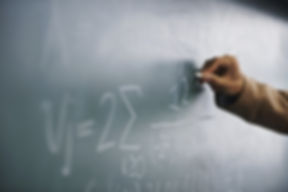
Kinesiology
Title: Comparison of Standing Vertical Jump Performance Using a Counter-Movement Jump (CMJ) versus an Isometric Preload Jump (IPJ).
Author: Dr. James E. Newbery.
Department: Kinesiology
Abstract: This project is designed to quickly introduce beginning kinesiology students to measurement and data analysis by comparing two interesting methods of increasing vertical jump height. Unit 1 of this project will involve students measuring the vertical jumping performance of their classmates when using a (1) Counter-Movement Jump (CMJ), compared to an (2) Isometric Preload Jump (IPJ). See below for descriptions of these. Performance measurements will be recorded on a spreadsheet and compared using fundamental descriptive and inferential statistical software. The primary purposes of the project for Unit 1 are to (1) use correct measurement principles to collect data and, (2) describe differences in jumping height from the two movements using measures of central tendency and variability. The testing methodology, types of jumps, and biomechanical principle involved in increasing force production during the vertical jump, the stretch-shortening cycle (SSC), may be easily grasped by students without extensive study on the subject (see below for a description of these). The hypothesis for this study would not necessarily be directional, but would instead reflect the question: How does IPJ compare to CMJ in increasing vertical jump height?
Supplemental Material
You will find modules within the following broad categories:
Each module has two components:
1) A student version which describes the project , sources of data, methodology and other information needed to complete the project.
2) An instructor's notes which includes additional information for the instructors.
_______________________
Title: Comparison of 12-Year-Old Baseball Pitching Speeds: Little League Baseball Regional Tournament vs Select Baseball USA Tournament.
Author: Dr. James E. Newbery.
Department: Kinesiology
Abstract: This project is designed to quickly introduce beginning kinesiology students to data analysis by comparing the pitching speeds, heights, weights, and years of playing experience of two samples of players during a little league all-star regional tournament versus a select baseball USA tournament. Actual data from a previous study will be compared using readily available descriptive and inferential statistical software. The purpose of this module is to introduce beginning students to the power and ease of using statistics to answer questions in kinesiology by inserting a two-class session analysis experience their freshman year. Furthermore, this analysis module is designed to be used by instructors who are not specialists in measurement and statistical analysis.
Module 4 A
Supplemental Material
Title: No fans, Home advantage lost? Utilizing Covid-19 Data to Explore Fan effect.
Author: Dr. Reza Abbasian
Department: Math Computer Science & Information Systems
Abstract: In this project, we explore home field advantage in sports to study if having fewer or no fans affect home advantage for teams in certain sports. Covid-19 provided us with the data to compare performance of teams at home games versus away matches. Groups of students are assigned to various sports, specifically the British Basketball League (BBL), Major League Baseball (MLB), National Basketball Association (NBA), and Major League Soccer (MLS) to see how COVID-19 affected home field advantage.

